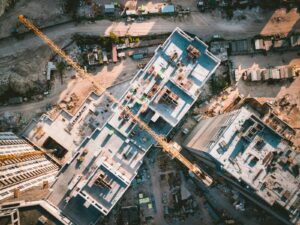Heritage and housing celebrated in RTPI awards
 The role of planning in creating vibrant places is celebrated in this year’s awards from the Royal Town Planning Institute
The role of planning in creating vibrant places is celebrated in this year’s awards from the Royal Town Planning Institute
Dudley’s former Flint Glass works, in the West Midlands, was a decaying building, until the council transformed it through a heritage-led approach into a modern bar and restaurant.
Similarly, Cardiff’s Grade II listed Tramshed had seen better days until it was redeveloped into a multipurpose arts centre and apartments. Saltcoats Town Hall (pictured left), on Scotland’s west coast, was given a new lease of life as offices and event space.
These projects are powerful examples of the impact heritage-led regeneration has to transform places. What isn’t immediately obvious is how the transformation came about and who or what was involved in making it a success. Planning is at the heart of good regeneration but is sometimes, to steal a line from economic theory, the ‘invisible hand’ guiding it.
Before the red ribbon is cut on a shiny new building or regeneration project, planners have, behind the scenes, balanced community, business and environmental needs to ensure the final result benefits everyone. Regeneration also requires active and meaningful long term community involvement as well as changes to the physical environment. Planners are skilled in both these areas.
 From roundabouts to major housing projects
From roundabouts to major housing projects
The Royal Town Planning Institute’s Awards for Planning Excellence celebrate these outstanding examples of planning, drawing attention to work that might have otherwise gone unnoticed.
The award categories reflect the diversity of work planners are involved in, from housing and infrastructure to wellbeing and the natural environment. They also honour the people who bring the planning system to life, with gongs to outstanding teams and individuals.
In 2017 a record 90 finalists across 14 categories are competing for the industry’s most prestigious awards. Finalists range from small scale interventions like making the Bournemouth Station Roundabout safer and more attractive, to a project which documents all of the historically significant churchyards in the City of London to a major solar power farm in Belfast and a youth camp in Dundee.
This year a large number of finalists include a major housing component – an increasingly common trend among finalists over the last decade. It’s clear planners are doing their best to deliver more homes so desperately needed and this year’s finalists demonstrate the diversity of schemes required to seriously address the housing crisis.
Take, for example, Perrybrook which is a new 1,500 home development near Brockworth in England’s south west, while the Bransgore Affordable Housing Scheme has built two houses in New Forest National Park on land donated to the park authority.
But what is it that makes a project a finalist and, hopefully, a winner? An independent panel of 49 judges experienced in all areas of planning, from across the United Kingdom and Ireland, assess each of the submissions against a set of criteria. Judges ask: does it contribute to sustainable development, how well were the community involved, were professional and innovative planning content and skills used, have they addressed equality and diversity issues and how beneficial is the final outcome? Finalists and winners aren’t just pretty buildings or fancy looking plans. They’ve gone above and beyond.
It’s also about process. House builders and local authorities proactively working together to deliver homes. Developers or councils meaningfully engaging with the community and incorporating their ideas in the outcome. When it comes to heritage regeneration, it’s about preserving and enhancing the historic qualities of places. It’s also the wider economic impact regeneration has. How they’ve contributed to reviving places to make them economically, socially and environmentally successful. Regeneration must be sustainable so future generations can continue to enjoy our rich built environment heritage.
After 40 years the awards continue to be the most prestigious way to raise the profile of the profession and its work. While they are about rewarding planners, it’s not inward looking. A good day at work for a planner means delivering vibrant communities and prosperous places everyone can enjoy – we all benefit from their good work.















